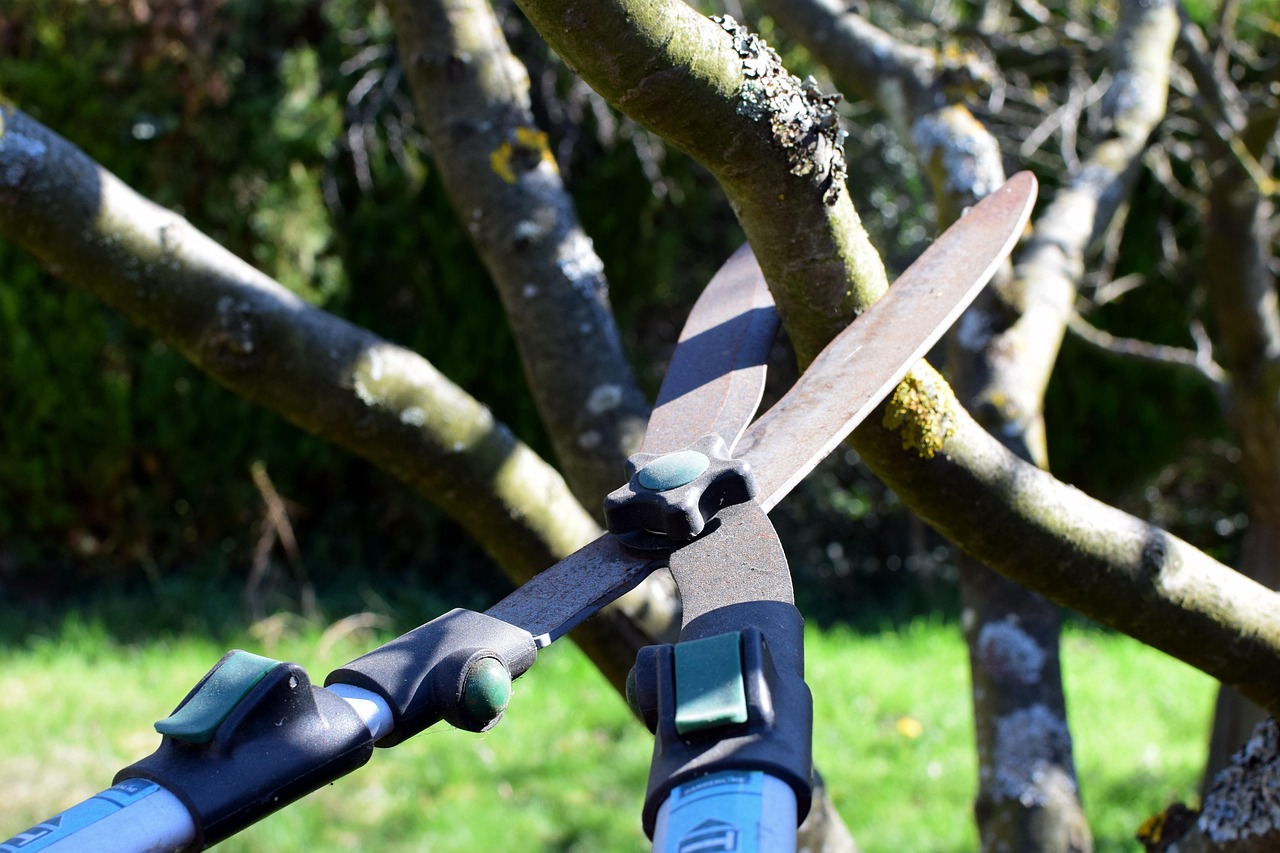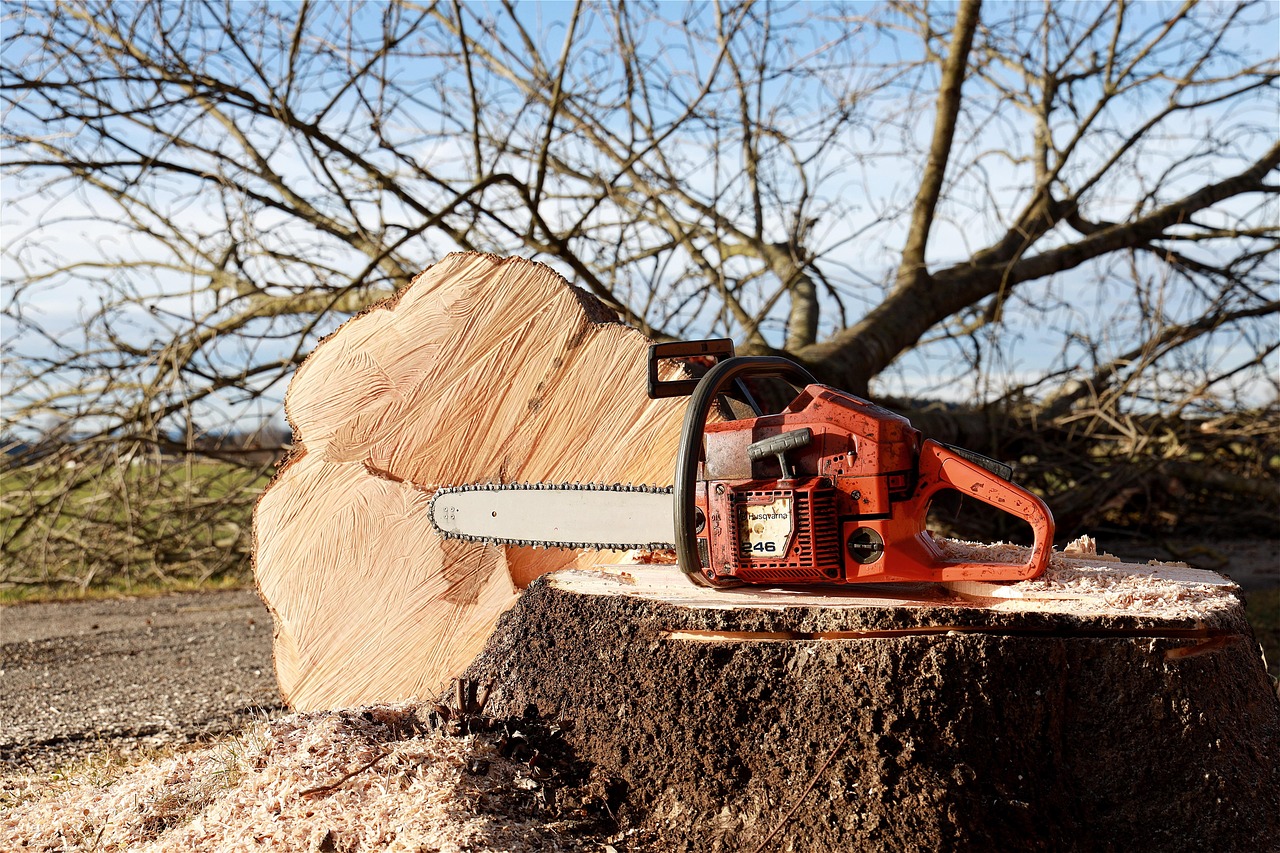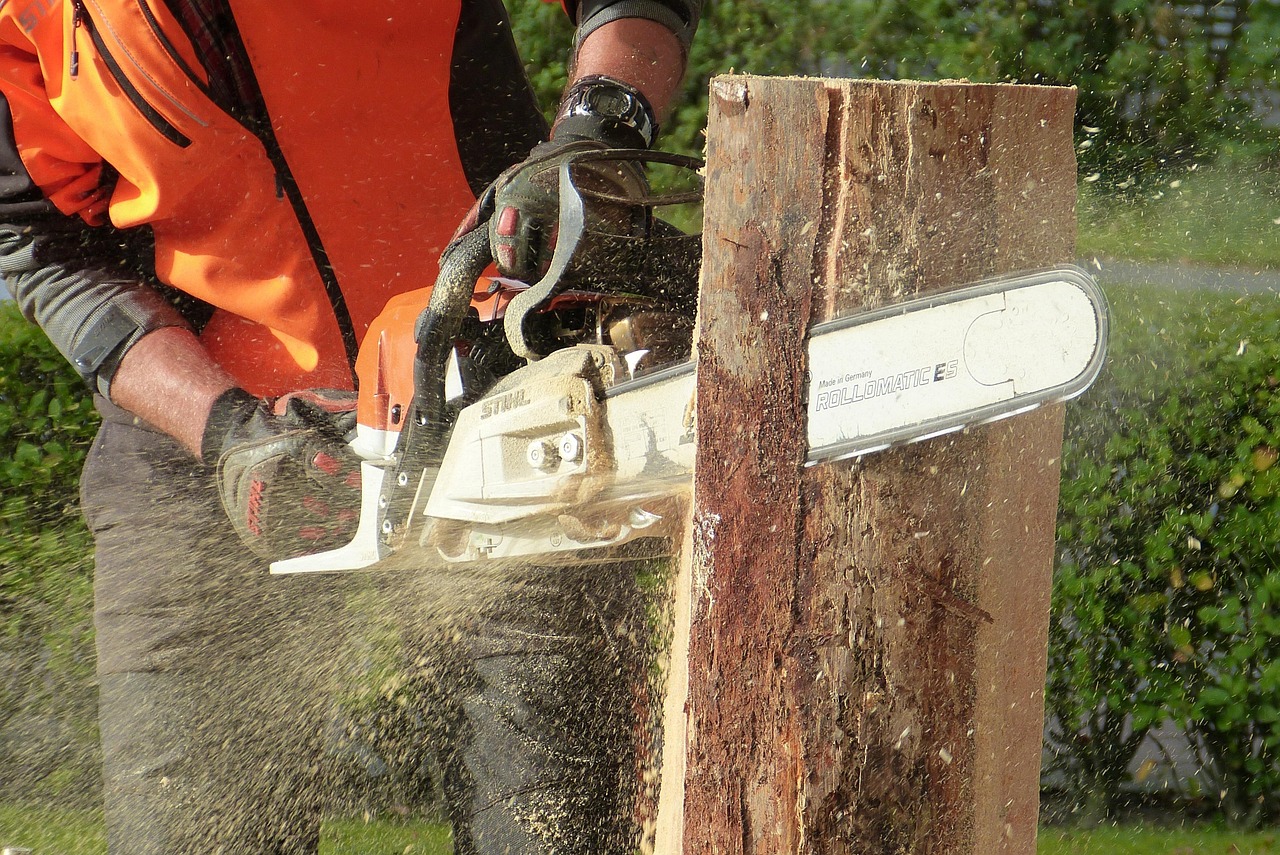Tree pruning is essential for reclaiming overgrown gardens. It improves the health of trees, enhances aesthetics, and promotes better growth by removing dead or diseased branches. Proper pruning techniques can transform a chaotic landscape into a well-maintained garden.
Many homeowners face the challenge of overgrown gardens. These spaces often become unmanageable due to neglect or rapid growth. Trees and shrubs can take over, obscuring pathways and creating a tangled mess. This can lead to a garden that feels overwhelming rather than inviting. However, with effective tree pruning strategies, it is possible to restore order and beauty to these outdoor spaces.

Tree pruning is not just about cutting branches. It involves understanding tree biology and applying techniques that encourage healthy growth. Proper pruning helps trees develop strong structures, reduces the risk of disease, and enhances their overall appearance. Additionally, it allows sunlight to penetrate through the canopy, promoting growth in the lower plants and maintaining a balanced ecosystem.
Understanding Tree Pruning
Tree pruning involves selectively removing specific parts of a tree, such as branches, buds, or roots. This practice is crucial for various reasons:
- Health: Removing dead or diseased branches prevents the spread of pests and diseases.
- Safety: Pruning reduces the risk of falling branches that could harm people or property.
- Aesthetics: Properly pruned trees enhance the visual appeal of a garden.
- Growth: Encouraging new growth by removing older branches allows the tree to thrive.
Before starting any pruning, it is essential to evaluate the trees in your garden. Different species require different approaches. Some trees may benefit from light trimming, while others may need extensive pruning to maintain their shape and health.

When to Prune Trees
The timing of tree pruning can significantly impact the health and growth of the tree. Generally, the best time to prune is during the dormant season, which is typically late winter to early spring. At this time, trees are less stressed, and it is easier to see their structure without leaves obstructing your view.
However, some trees may require specific timing based on their type:
| Tree Type | Best Pruning Time | Notes |
|---|---|---|
| Deciduous Trees | Late Winter to Early Spring | Before new growth begins. |
| Evergreen Trees | Late Spring to Early Summer | Avoid late fall to prevent winter damage. |
| Flowering Trees | After Blooming | Prune immediately after flowers fade. |
| Fruit Trees | Winter Dormancy | Aim for balance and air circulation. |
Understanding the right time to prune can lead to healthier trees and more fruitful gardens. Additionally, each season brings its unique characteristics that may influence your pruning approach.

Tools for Tree Pruning
Having the right tools is essential for effective tree pruning. Using inappropriate tools can damage the tree and make the job more challenging. Here are some common tools used in tree pruning:
- Hand Pruners: Ideal for small branches up to ¾ inch in diameter.
- Loppers: Best for thicker branches, typically between ¾ inch and 2 inches in diameter.
- Saws: Needed for larger branches; choose a pruning saw or a chainsaw for significant cuts.
- Safety Gear: Always wear gloves, goggles, and protective clothing to prevent injuries.
Using high-quality tools not only makes pruning easier but also ensures clean cuts. Clean cuts help prevent disease and promote quicker healing in trees.
In summary, tree pruning is a vital task for anyone looking to reclaim an overgrown garden. Understanding when and how to prune is essential for maintaining healthy trees and enhancing the overall beauty of your outdoor space. The right tools and techniques will help you achieve the best results, transforming your garden into a thriving environment.

Pruning Techniques for Different Tree Types
Understanding the specific pruning techniques for various types of trees is crucial for effective maintenance. Different species have unique growth patterns and requirements. Here are some common tree types and the recommended pruning techniques for each:
Deciduous Trees
Deciduous trees, which lose their leaves in the fall, often require pruning during their dormant season. This helps shape the tree and encourages new growth in the spring. The following techniques are effective:
- Crown Thinning: This technique involves selectively removing branches to increase light penetration and air circulation.
- Crown Raising: Remove lower branches to raise the crown, improving visibility and access beneath the tree.
- Crown Reduction: Reduce the size of the tree by cutting back branches to lateral buds or smaller branches.
Evergreen Trees
Evergreen trees retain their foliage year-round. Pruning should be done typically in late spring or early summer. Techniques include:
- Pinching: This method involves removing the tips of young shoots to encourage bushier growth.
- Selective Pruning: Remove older branches to maintain shape and promote new growth.
- Thinning: Similar to deciduous trees, thinning can improve light and air penetration.
Flowering Trees
For flowering trees, timing is essential. Pruning should occur right after flowering to avoid cutting off next year’s blooms. Recommended techniques include:
- Deadheading: Remove spent flowers to encourage further blooming and enhance appearance.
- Crown Cleaning: Remove any dead, damaged, or crossing branches to improve health and appearance.
Fruit Trees
Fruit trees benefit from careful pruning to promote healthy fruit production. The ideal time for pruning is during winter dormancy. Key techniques include:
- Open Center Pruning: Create an open center structure to allow sunlight to reach all parts of the tree.
- Thinning Cuts: Remove excess fruiting wood to encourage larger fruit growth and reduce stress on the tree.
The Importance of Proper Techniques
Using incorrect pruning techniques can cause significant harm to trees. It is essential to understand how different cuts affect growth. Here are some proper techniques that should always be considered:
- Make Clean Cuts: Use sharp tools to create clean cuts, which heal faster and reduce the risk of disease.
- Avoid Topping: Topping can lead to weak growth and is detrimental to the health of the tree.
- Prune at the Right Angle: Always prune at an angle to prevent water accumulation on cuts, which can lead to rot.
Signs That Trees Need Pruning
Knowing when a tree requires pruning is essential for maintaining its health. Here are some common signs that indicate it may be time to prune:
- Dead or Diseased Branches: Any branch that appears dead or diseased should be pruned immediately.
- Excessive Growth: If branches are crossing or overcrowding, it’s time for some thinning.
- Pests or Insects: An increase in pests on certain branches may indicate the need for pruning.
- Improper Shape: If the tree appears unbalanced or misshapen, corrective pruning can help restore its form.
Common Mistakes in Tree Pruning
Avoiding common mistakes can lead to healthier trees and better results. Here are frequent errors made during tree pruning:
- Pruning Too Much: Over-pruning can stress trees and lead to poor growth. Always follow recommended guidelines.
- Poor Timing: Pruning at the wrong time can remove essential growth for the coming season.
- Ignoring Safety: Failing to use safety gear or not being cautious with tools can lead to injuries.
- Lack of Planning: Not assessing a tree’s structure before pruning can lead to uneven results.
By understanding these techniques, signs for pruning, and common mistakes, you will be better equipped to reclaim your overgrown garden effectively. Implementing these practices will not only enhance the aesthetic appeal of your space but also ensure the health and longevity of your trees.
Post-Pruning Care for Healthy Trees
After pruning your trees, it is crucial to provide proper care to ensure their recovery and promote healthy growth. The way you care for your trees post-pruning can significantly impact their overall health. Here are some essential steps for post-pruning care:
Watering
Proper hydration is vital after pruning. Trees may experience stress from the loss of foliage and branches. To support their recovery:
- Water Deeply: Water the tree deeply to encourage roots to absorb moisture effectively.
- Check Soil Moisture: Ensure the soil remains moist but not saturated. Overwatering can lead to root rot.
- Mulching: Apply a layer of mulch around the base of the tree to retain moisture and regulate soil temperature.
Fertilization
Fertilizing your trees after pruning can help them regain strength and promote new growth. Choose the right fertilizer and follow these guidelines:
- Type of Fertilizer: Use a balanced fertilizer that provides essential nutrients.
- Timing: Fertilize in early spring, just before the growing season, to give trees a nutrient boost as they begin to leaf out.
- Application: Follow the manufacturer’s instructions for application rates and methods.
Monitoring for Pests and Diseases
Pruned trees can be more susceptible to pests and diseases. Regular monitoring is essential:
- Visual Inspections: Check for signs of pests, such as holes in leaves or discoloration.
- Fungus Awareness: Look for signs of fungal infections, such as unusual growths or discoloration on the bark.
- Prompt Action: If you identify pests or diseases, take action quickly with appropriate treatments or consult a professional arborist.
Seasonal Considerations in Tree Care
The changing seasons can affect tree care practices. Understanding how different seasons impact your trees is essential for maintaining their health.
Spring Care
Spring is a critical time for tree growth. After pruning, focus on:
- Pest Control: Implement pest control measures as insects become more active.
- Fertilization: As previously mentioned, apply fertilizer to provide essential nutrients for new growth.
- Irrigation: Ensure that trees receive adequate water, especially if spring is dry.
Summer Care
During summer, trees are in full growth mode. Care tips include:
- Water Management: Adjust watering based on rainfall and temperature; younger trees may require more frequent watering.
- Weed Control: Keep the area around the tree free of weeds that can compete for nutrients and water.
- Mulch Maintenance: Replenish mulch as needed to maintain its effectiveness.
Fall Care
As autumn approaches, prepare your trees for winter:
- Final Watering: Provide one last deep watering before winter to support root health during dormancy.
- Pest Inspection: Inspect for any lingering pests that could overwinter on the tree.
- Leaf Cleanup: Rake fallen leaves to prevent diseases from overwintering in debris.
Winter Care
In winter, trees are dormant, but care is still necessary:
- Avoid Pruning: Refrain from any further pruning during this period unless absolutely necessary.
- Protection Against Snow and Ice: If heavy snow or ice accumulates on branches, gently remove it to prevent breakage.
The Role of Professional Arborists
For many homeowners, especially those with extensive gardens or large trees, hiring a professional arborist can be a wise investment. Arborists are trained experts who specialize in tree care and can provide valuable services such as:
- Expert Assessments: Arborists can evaluate tree health and determine the best course of action for pruning and care.
- Sophisticated Equipment: They have access to specialized tools and equipment that can make the job safer and more efficient.
- Disease Treatment: Arborists can identify diseases and pests that may require advanced treatment methods.
- Aesthetic Design: They can assist in creating a beautiful landscape design that considers the specific needs of your trees.
Selecting a qualified arborist is essential. Look for credentials, experience, and customer reviews to ensure you are choosing someone reputable and skilled.
Caring for your trees after pruning is just as important as the pruning process itself. By implementing proper post-pruning care, understanding seasonal needs, and considering professional help, you can create a thriving environment for your garden to flourish.
Maintaining Long-Term Tree Health
After successfully pruning and caring for your trees, it is important to focus on long-term maintenance to ensure their health and vitality. Regular care will help prevent issues that can arise from neglect. Here are some key practices to adopt for maintaining healthy trees:
Regular Monitoring
Keeping an eye on your trees is essential for early detection of problems. Regular monitoring can help you identify:
- Signs of Stress: Look for wilting leaves, discoloration, or stunted growth, which may indicate underlying issues.
- Pests: Check for insect infestations or signs of disease, such as unusual spots or growths on leaves and bark.
- Growth Patterns: Observe how the tree is growing. Any changes in form or structure may require attention.
Soil Health
The health of the soil plays a significant role in the overall condition of your trees. Consider these soil management practices:
- Soil Testing: Conduct regular soil tests to determine nutrient levels and pH balance. This will help guide fertilization and amendments.
- Organic Matter: Incorporate organic matter, such as compost, to improve soil structure and provide essential nutrients.
- Pest Management: Healthy soil can help resist pests and diseases. Implement organic pest control methods when necessary.
Seasonal Pruning
While the main pruning should occur during the dormant season, seasonal maintenance is also important. Light pruning during the growing season can help maintain shape and eliminate any unwanted growth.
- Summer Pruning: Remove any dead or diseased branches as they become apparent. Additionally, you can thin out excessive growth to improve air circulation.
- Winter Maintenance: Inspect trees for any winter damage and address it promptly to avoid complications in the spring.
Community Involvement and Education
Engaging with your community can enhance your understanding of tree care. Many local organizations and gardening clubs offer workshops and resources on tree maintenance and gardening practices. Consider the following:
- Workshops and Classes: Attend local workshops that focus on tree care, gardening techniques, and sustainable practices.
- Networking: Connect with fellow gardeners and arborists to share knowledge and experiences.
- Volunteer Opportunities: Participate in community tree planting or maintenance events to gain hands-on experience.
Conclusion
Tree pruning is an essential practice for reclaiming overgrown gardens and ensuring the health of your trees. Understanding the techniques, timing, and tools required for effective pruning sets the foundation for successful garden management. Post-pruning care, including proper watering, fertilization, and pest monitoring, enhances recovery and promotes growth.
By adopting a holistic approach that includes regular monitoring, soil health management, and community involvement, you can create a thriving environment for your trees. Remember that each tree species has its unique needs, so staying informed about their specific requirements is crucial for long-term success. Engaging with professionals when necessary can also provide valuable insights into maintaining your garden’s beauty and health.
Your garden is a living ecosystem that requires care and attention. By implementing the strategies outlined in this article, you can transform an overgrown space into a vibrant, flourishing landscape that you and your family can enjoy for years to come.
